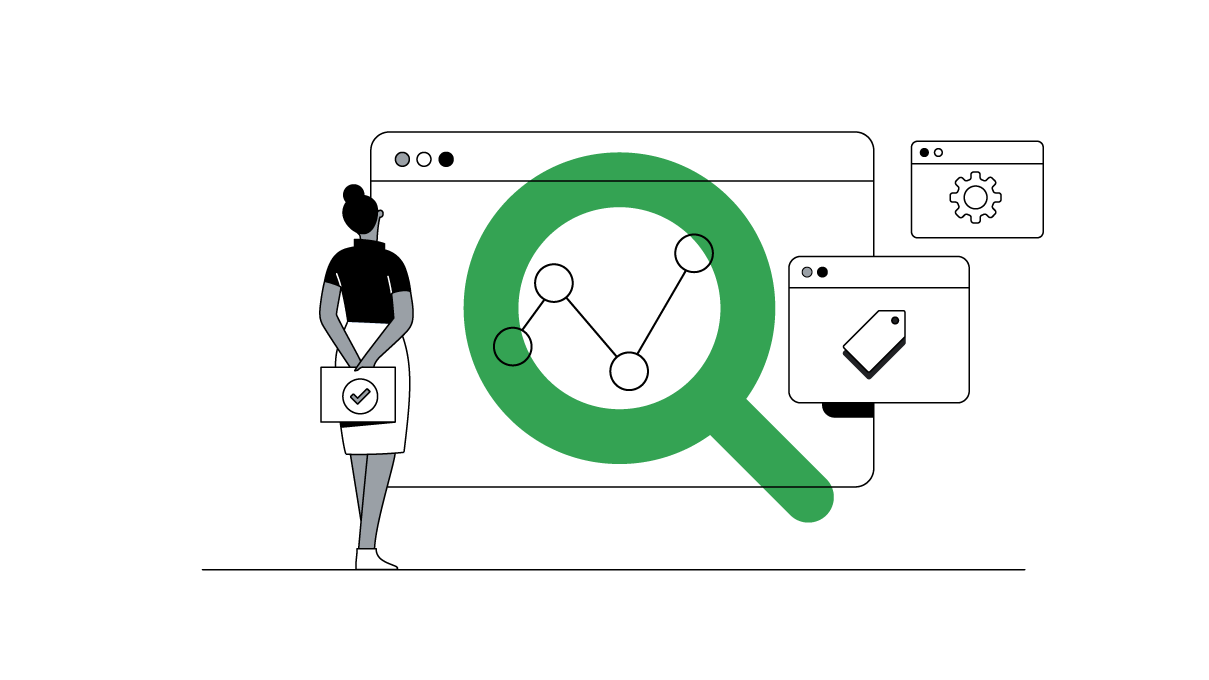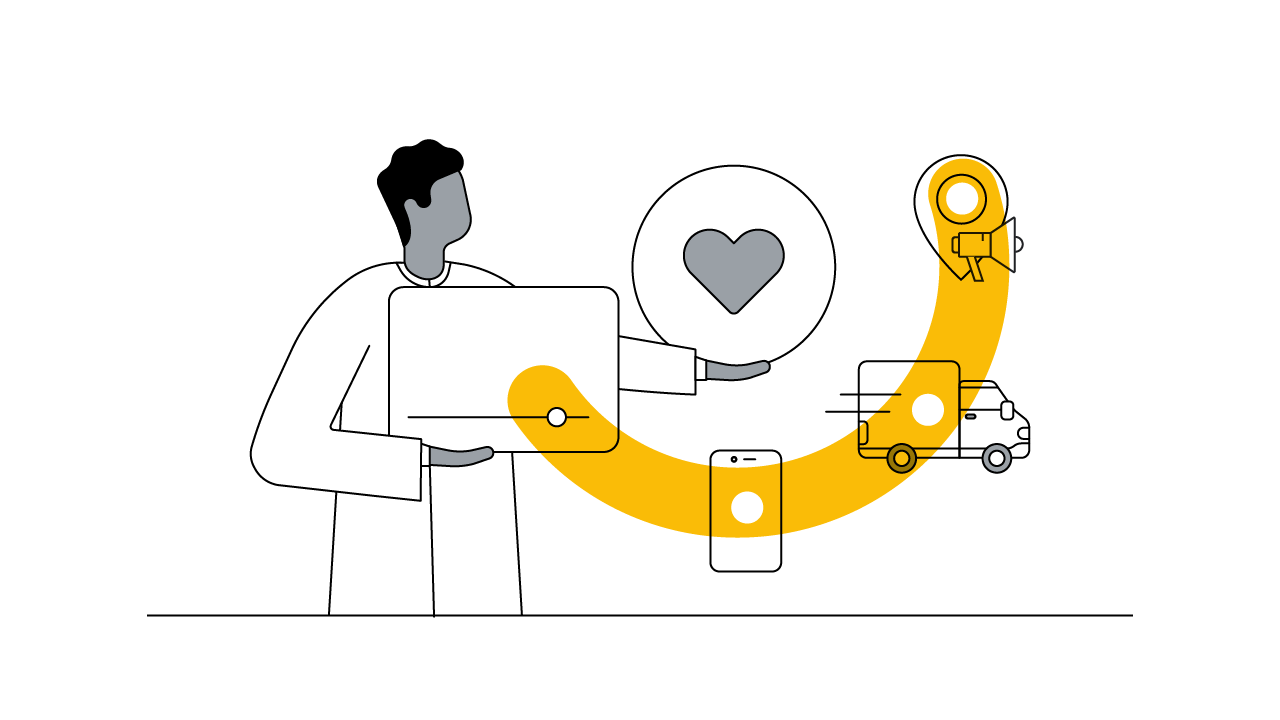In the last year, the pandemic has forced businesses to rethink everything. Companies have scrambled to figure out how — and even whether — to move forward. We all watched as talk of a “return to normal” gave way to “a new normal” and finally to, simply, “uncertainty.”
We all know good companies and strong brands that didn’t make it, through no fault of their own. And some companies in industries like consumer product goods, home goods and technology have benefited from the at-home economy.
This has been a period defined by uncertainty. Yet the rapid pace of digital adoption has been unprecedented. People have had to live more of their lives online than ever before. Technology became a lifeline — for businesses and consumers alike.
While this has been a period defined by uncertainty, the rapid pace of digital adoption has been unprecedented.
That lifeline has helped some companies weather the storm. By embracing digital transformation, by doing things differently, they’ve started to recover and even found ways to grow. Now, in a year of economic and social upheaval, I know it’s hard to imagine businesses undertaking such an effort. Budgets are tight. Hiring has slowed. And for many, digital transformation is seen as a nice-to-have, but it’s dismissed as a cumbersome, resource intensive project.
Yet, throughout this last year, we’ve partnered with companies that have embraced digital transformation as an essential and achievable value-adding process. You might be asking yourself, where you should even start. Or maybe you’re partway through your journey and thinking about what to tackle next. That’s the beauty of digital transformation: It’s an evolution — one that will pay dividends immediately and well into the future.
Through it all, some companies have managed to do more than just weather the storm — they’ve been able to recover and even grow.
Whether it’s real-time insights, automation and machine-learning tools, or privacy-safe measurement approaches, Google has been helping businesses of all sizes succeed by implementing components of digital transformation. Here are some lessons from their stories.

Lead with always-on insights
Understanding what consumers want is at the core of all marketing. And the dramatic pandemic-driven changes in consumer behavior highlight how important it is for marketers to be able to decipher and act on those signals quickly, especially in a dynamic or fluid environment. But insights aren’t just one and done, and they’re not only relevant in turbulent times. Tools like Travel Insights and Google Trends can help marketers be ready by understanding what people want and need.
When the news of worldwide lockdowns spread and international travel came to a stop, Luxury Escapes had to press pause on most of its marketing. While on hold, the team partnered with Google to dig deeper into their data, gauge Aussies’ interest in travel deals and destinations, and develop a new strategy.
Interest in local travel had steadily increased and customers were booking future getaways online.
Using Google Trends and Google Analytics, they found interest in local travel had been steadily increasing and customers were actually booking future getaways through their website and mobile app. To reach domestic customers, the company used Dynamic Search ads and automated bidding to maintain a healthy ROI while making getaways visible in the right moments when Aussies were searching.
Luxury Escapes took advantage of trends, and to survive in today’s volatile travel industry, it pays to have demand trends at your fingertips. Google’s Travel Insights tools can help give marketers updated information on current search interest for destinations and hotels around the world.
Respond faster with automation
In the deluge of data that defines the digital marketing era, only automation can unlock the full value of signals and insights by making them actionable in real time and at scale. Automation and machine learning tools free up time and resources for any brand’s most valuable resource — its people — to focus on being more creative, strategic, and impactful. Like digital transformation, automation isn’t a cost-cutting exercise. It’s an opportunity for growth and experimentation.
Courts is a leading Singapore-based electrical, IT, and furniture omnichannel retailer. COVID-19 was a game-changer for Courts as several of its branches could not operate during Singapore’s lockdown phase. Taking the cue to focus on its online consumers, Courts leaned into automated shopping ads for the first time.
Smart Shopping campaigns (SSC) used machine learning to analyze Court’s product feed from its Google Merchant Center and to create a variety of ads for search, display, YouTube, and other networks. These ads were automatically tested and optimized, showing consumers the most relevant ads over time. Complementing its existing search strategy, SSC increased online sales revenue by 7.8X and improved return on ad spend (ROAS) by 3.7X. Even as lockdown measures were eased, Courts’ online sales remained high thanks to this new approach.

Make data-driven, privacy-safe decisions
No matter the business climate, data is critical to understanding how the environment around us is evolving. And it’s critical to have privacy-safe measurement solutions that enable you to see across consumer journeys that span channels and platforms.
No matter the business climate, data is critical to understanding how the environment around us is evolving.
At Eli Lilly, a pharmaceutical company that sells products in 125 countries, data became the litmus test for understanding shifts in consumer behavior and informing decisions the company made. And for each data set collected, the company evaluates whether it should be using the data, how it is created, and if the consumer has given permission for it to be used.
As the company embarked on its digital transformation road map, it worked to identify which data sources were most helpful across the purchase journey, like search behaviors and website interactions. And it evaluated which skills and processes to bring in-house and which ones to outsource to an external agency. For example, by bringing search engine marketing in-house and fully owning that part of the consumer journey, the brand acquired more meaningful data and drove over 12 million more patient connections on its website.
Digital transformation is a process, not a project
Digital transformation may sound daunting and expensive, with uncertain benefits. I promise you it’s anything but. And in these unpredictable times it’s essential. As these companies have found, each component of digital transformation can drive results today, while building resilience for tomorrow. And even though it’s impossible to know exactly what tomorrow holds, digital transformation ensures your business will be ready.







